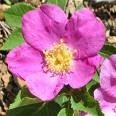#PLENK2010 I mention the Laubach Method of Teaching Reading. Laubach was asked to teach reading in an isolated community. He promised to do so if the students would promise to teach at least one other person. He designed materials and used both phonetic clues and modeling to teach one person to read. That person taught another. That person taught another. Those who could read went on teaching those who couldn't. That was also the model of the rural school, in which the younger children were taught by the older children.
One week I flew out to a remote school as a substitute teacher. When I noticed that Albert had finished his work, I suggest to him that he help Bobby with his work. The children were astonished. They had never heard of such a thing. "And Albert is Bobby's older brother," they said. At the time, I did not know the significance of that. Since then, I have learned that at Indian Residential schools, as they were called, the children were forbiddden to talk to one another, and family ties were cut very firmly.
I wanted to teach those kids about Vlad the Impaler. There was nothing in the school library that I could find on the original Count Dracula. The kids were interested in the topic. They could have had a grand time learning history, science (blood diseases), painting pictures and writing stories. There was no internet then so I could not do that project. I stuck to what the teacher had left for me to do.
There is so much information out there in libraries and on the Web that there is something to excite the interest of the students. If they are actively learning something, you can talk to them about how they are learning and how they are sharing and thereby teach them how to learn on their own. That is the content: How do you learn and how do you share what you have learned?
Most of what we teach as content can be learned by them as older students in a month of reading. What we are in the business to teach, in elementary and secondary school, is the conventions of how we write and, therefore, how we read text books and blog pages and e-books and e-zines. So much of the mathematics that boggles them at first is How do we write that in Algebra? Once you know the code, you can say anything.
One student in Grade 10 was complaining to me that the exercises in the school texts were so typical. "Yes," I agreed. "In school we teach you the TYPEs of problems that are very common and for which solutions have been found and that you might find anywhere. Once you learn those types, you can apply that knowledge to new kinds of problems." He stopped complaining.
And yes, I have written lessons on the nexus of English, Science and Mathematics and how they form the CORE of the subjects.
P.S. Although I was teaching Mathematics at the time, I was asked by the Science teacher to sub for him in Grade 9 Science while he went to the dentist. It just happened that the lesson was on chemical equations and how to write and read them. "Gee, Ms Grigor, you make even Science sound like Math," one said. "Of course, I said. This is Mathematics. You are balancing the atoms in the molecules." I don't think he believed me.

No comments:
Post a Comment